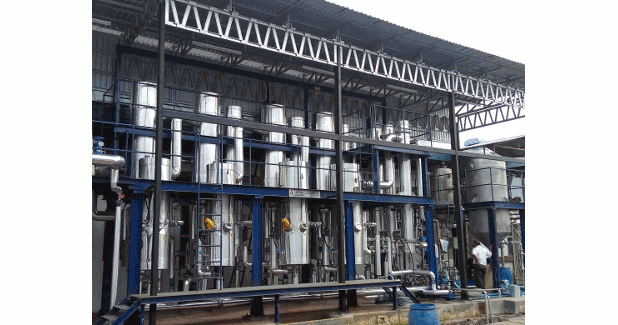
Our CRP has always been in demand and will continue to do
For the past 40 years or so, Unitop Aquacare has been in the forerunner in recovery from waste. Currently, the company provides a wide range of products including caustic recovery plant (CRP), multi effect evaporation plant, agitated thin film dryer, crystalliser, and stripping column.
For the past 40 years or so, Unitop Aquacare has been in the forerunner in recovery from waste. Currently, the company provides a wide range of products including caustic recovery plant (CRP), multi effect evaporation plant, agitated thin film dryer, crystalliser, and stripping column. Sanjay Sawant, General Manager – Business Development, Unitop Aquacare Ltd, speaks on the company’s participation at ITMA, and its product portfolio during the mega event.
How many ITMAs has your company attended. Please share your company’s experience in the international markets with reference to participation in other exhibitions too.
Unitop has already participated in the last two ITMAs and this is third time for us. ITMA always provide us with an international platform to meet different customers from different countries. This exhibition gives us lot of insights regarding the upcoming market trends so that we can prepare our marketing policies well in advance.
ITMA gives us an opportunity to explore new markets and find new agents/ representatives so that we can extend our market reach. It’s a forum wherein one can establish their creditability by displaying their products.
We have found that visitors for this exhibition are very serious about their projects, and the conversion from visitors to customers is faster.
What are the machinery/accessories your company will be displaying during this ITMA Barcelona? What are their unique features and applications?
At ITMA, we will be displaying the model of our Caustic Recovery Plant (CRP), which will be a replica of our plant. This will help in ease of understanding for visitors. We will be presenting video on the plant operation, explaining the atomisation and special features.
How have your company’s products been doing in the global export markets? In which year did the company make a breakthrough and how has this progressed through the years?
We are focused on export markets, and for that we have a factory in Gujarat SEZ. We have already supplied plants in 15 countries and have got international certifications like CE, SELO, NR13.
As a marketing strategy, we will not be able to give out the names of countries. We have identified countries where we need to make inroads and are working on it.
In the recent past, has your company entered new markets, and if so, which are the ones and for which products?
As a strategy, we are trying to consolidate our place in the countries where we already have good presence by establishing local network for aftersales service, providing training to our local representative on troubleshooting, allocating dedicated manpower for service visits, etc. so that we have happy customers. We have diversified in the field of wastewater and zero liquid discharge plants, and are targeting to have business from countries where we have already established the Unitop brand.
Is your company fully or partially dependent on foreign technology or inputs? Or are the products totally indigenously made? Give your comments on your competitive strength.
I would like to mention that all our products are developed in-house and are 100 per cent indigenous. We believe in constant upgradation to bring down the operational cost, and provide latest atomisation for ease of operation.
We are working on a service app so that our customers can be in direct touch with our service team and register problems, if any. This will be an interactive system that helps to track and provide solutions to problems as fast as possible.
With some new countries entering textile production and also a few reshoring and revival of textile industries, do you see any rise in demand for your products globally?
Our product caustic recovery plant (CRP) helps to recover expensive chemicals. This helps the customer to bring down their production cost and can be competitive. The best part of our product is that it recovers water and helps to bring down the cost of effluent treatment. This is a win-win situation. Our CRP has always been in demand and will continue to do so, with more and more countries focusing on wet processing.
What are the future prospects and problems that your company is facing in raising its share for its products/machinery in the global market?
I would like to address our problems as challenges. Sometimes a new/nonprofessional company tries to make CRP without any experience, just by keeping in mind the short-terms benefits. For that, we need to be in constant touch with our customers, explaining not only our technology, but also the products that these types of companies are offering and also the disadvantages so that the customer makes the right selection.
Promoting products/machinery effectively through exhibitions abroad is very important for the industry and the country in these days of globalisation. Do you have any suggestions/advice for the industry and the Government in this regard?
The Indian Textile Ministry and Export Promotion Council should identify the best machine manufacturers and form a delegate. They can arrange visit of this delegate to different countries and can even include bankers in this delegate so that, if required, funds can be provided and Indian manufacturer can get the business. This kind of business model in active in China and Europe.



